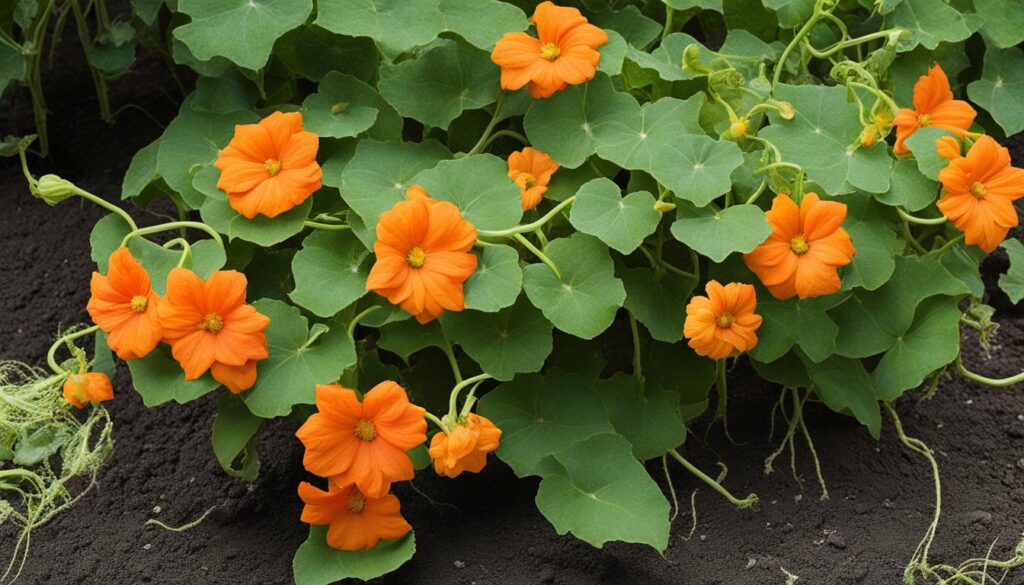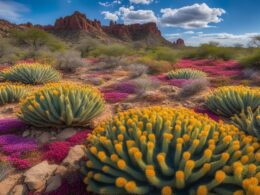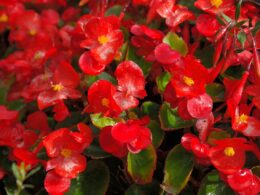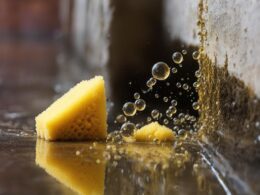Welcome to our article on the life cycle of a pumpkin. Have you ever wondered how a small seed transforms into a vibrant orange fruit? In this guide, we will explore the stages of pumpkin growth, from seed planting to harvesting. Understanding the pumpkin plant development process can help you cultivate healthy and thriving pumpkins in your own garden.
Whether you are a gardening enthusiast or simply curious about the fascinating journey of a pumpkin, this article will provide you with valuable insights. Let’s delve into the stages of pumpkin growth, explore the different phases of its life cycle, and discover the secrets behind pumpkin plant development.
Stages of Pumpkin Growth
The life cycle of a pumpkin begins with the planting of seeds. To ensure successful pumpkin seed planting, it is best to wait until late spring or early summer when the risk of frost has passed and the soil temperature is above 70 °F. Planting the seeds at the right time sets the stage for a healthy and vibrant pumpkin plant.
Once the seeds are planted, the next stage in the pumpkin life cycle is germination. During this process, a root emerges from the seed, anchoring it in the soil, and the first true leaves start to develop. This is an exciting time as you watch your pumpkin plant come to life.
As the plant continues to grow, it forms a robust root system that provides it with essential nutrients and water. Simultaneously, the plant begins to produce vines that grow outward, creating a sprawling pumpkin patch. Interestingly, pumpkin plants have the ability to spread up to 6 inches per day, quickly covering the ground.
After a few weeks, the pumpkin plant reaches another milestone in its growth – the development of flowers. Both male and female flowers bloom, attracting bees for pollination. This is a critical step in the pumpkin life cycle as it determines whether fruit formation will occur.
Pollination occurs when bees transfer pollen from the male flowers to the female flowers. This transfer of pollen triggers the formation of pumpkins. Over the next 45-55 days, the fruit grows in size and undergoes a fascinating transformation. The green pumpkins gradually turn orange, indicating their maturation.
Once the pumpkins reach their full size and the skin is firm to the touch, they are ready to be harvested. This signals the completion of the pumpkin life cycle, from seed planting to fruit formation. It’s a rewarding experience to see the result of your efforts come to fruition.
Conclusion
Taking care of pumpkins during their life cycle is essential for their proper development. To ensure healthy and vibrant pumpkins, it is important to provide them with the right care and attention.
Pumpkins require regular watering, with a good soak once a week or more frequently in humid regions. Remember to water the soil, not the foliage, to prevent fungal diseases. Additionally, as the plants grow, their vines may need support to prevent them from breaking under the weight of the fruit.
Regular fertilization with a potassium-rich fertilizer is recommended to provide the plants with the necessary nutrients for growth. When it comes to harvesting, wait until the pumpkins have turned a vibrant orange color and the skin has hardened. Cut the long stalk of the pumpkin and lift it by the body to avoid any breakage. After harvesting, allowing the pumpkins to cure for a few days can further harden the skin.
Once your pumpkins are ready, they can be stored in a cool, dry place until you’re ready to use them for carving or other fall decorations. By following these pumpkin care tips and understanding the life cycle of a pumpkin, you can enjoy a bountiful harvest and beautiful pumpkins that will enhance your fall season.
What are the similarities and differences between the life cycle of a pumpkin and the stages of sunflower growth?
The stages of sunflower growth and the life cycle of a pumpkin share some similarities. Both plants start as a seed and then grow into a seedling, followed by the vegetative growth stage before reaching maturity. However, the differences lie in their reproductive processes and the specific environmental requirements for optimal growth.










